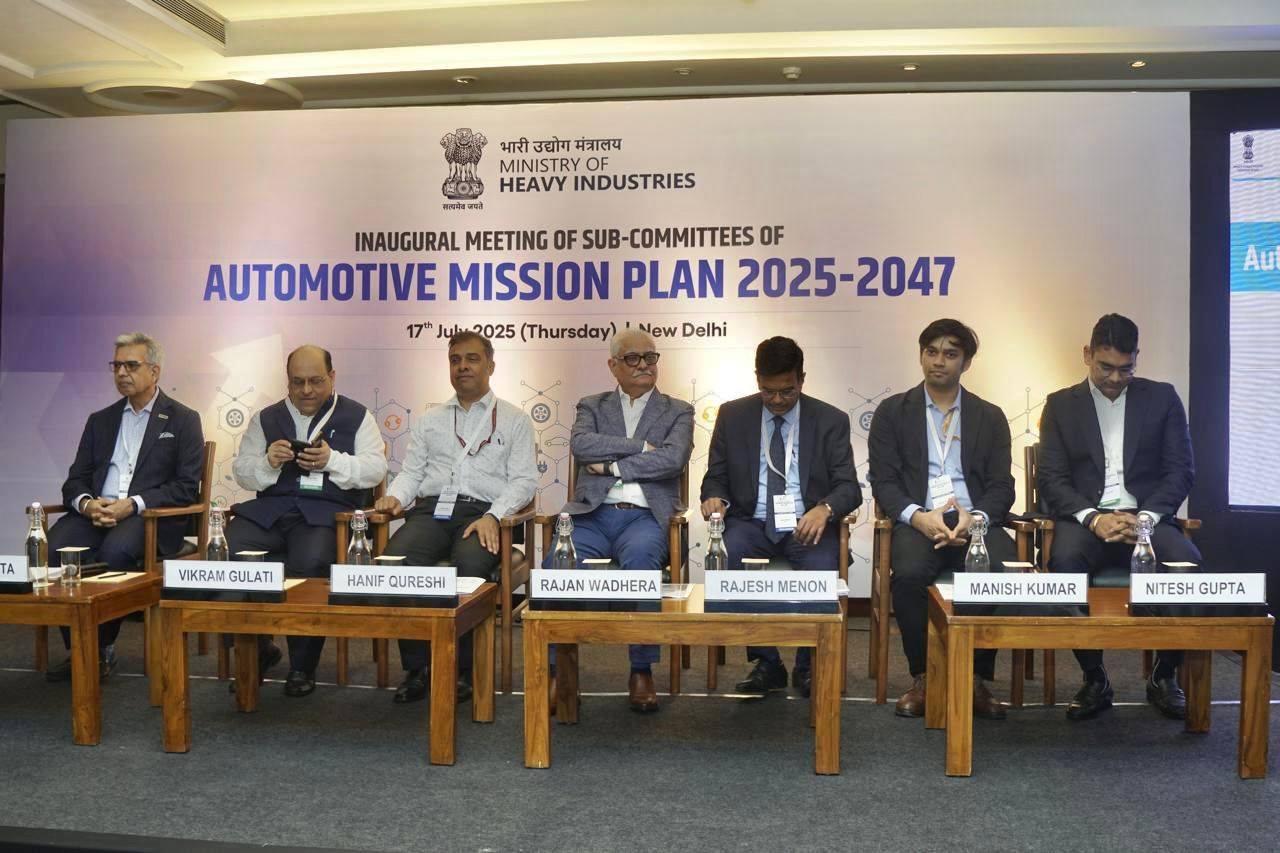India Charts Bold Course with Automotive Mission Plan 2047 to Lead Globally
At the inaugural meeting of AMP 2047’s seven Sub-Committees, Dr. Hanif Qureshi, Additional Secretary, Ministry of Heavy Industries, emphasized the urgency and vision behind this endeavor.

- Country:
- India
The Ministry of Heavy Industries (MHI), Government of India, has initiated a landmark initiative to develop the Automotive Mission Plan 2047 (AMP 2047) — a strategic roadmap designed to propel India’s automotive sector into a global leadership position by the year 2047. This effort is in alignment with the broader ‘Viksit Bharat @2047’ vision championed by Prime Minister Shri Narendra Modi, and guided by the Union Minister for Heavy Industries and Steel, Shri H.D Kumaraswamy.
AMP 2047 builds upon the success of previous Automotive Mission Plans (AMP 2006–16 and AMP 2016–26), which significantly boosted the domestic automotive industry by fostering collaboration among stakeholders. With India now aspiring to be among the top nations in global trade, exports, and technology innovation, AMP 2047 aims to reshape India’s automotive narrative over the next two decades.
A Strategic Roadmap with Concrete Goals
At the inaugural meeting of AMP 2047’s seven Sub-Committees, Dr. Hanif Qureshi, Additional Secretary, Ministry of Heavy Industries, emphasized the urgency and vision behind this endeavor. He remarked:
“This vision for 2047 is not merely aspirational; it is strategic, grounded in actionable targets that will shape the future of the Indian automotive industry. We must transcend brand or technology silos and look toward India’s place in global value chains.”
The AMP 2047 roadmap aims to be forward-looking and technology-agnostic, while addressing critical areas such as:
-
Export growth and global trade competitiveness
-
Domestic value addition and job creation
-
Adoption of cleaner technologies
-
Strengthening innovation ecosystems
-
Accelerating decarbonization and circular economy models
Wide-Ranging Participation Across Sectors
The formulation process for AMP 2047 is being driven by multisectoral coordination involving a wide spectrum of government bodies, industry associations, and academia. Representatives at the inaugural meeting included:
-
Ministry of Power
-
Ministry of Road Transport and Highways
-
Ministry of Commerce and Industry
-
Department for Promotion of Industry and Internal Trade (DPIIT)
-
Ministry of Petroleum and Natural Gas
-
Ministry of Environment, Forest and Climate Change
Industry bodies such as SIAM (Society of Indian Automobile Manufacturers), ACMA (Automotive Component Manufacturers Association), CII, FICCI, as well as academic institutions, research think tanks, and leading testing agencies also joined forces to kickstart the dialogue.
This industry-led model is intended to ensure bottom-up consultation, enabling the plan to reflect ground realities, market dynamics, and technological trends.
Sub-Committees to Steer the Planning Process
The seven Sub-Committees have been constituted with experts from government, industry, and academia. Each will focus on distinct thematic areas, including:
-
Technology and R&D
-
Sustainability and Green Mobility
-
Manufacturing and Supply Chains
-
Export Promotion
-
Skill Development and Employment
-
Investment and Infrastructure
-
Policy and Regulatory Frameworks
These working groups will identify interim milestones for the years 2030, 2037, and 2047, creating a phased progression plan for transformation. Their consolidated proposals will be submitted to the Apex Committee, chaired by Shri Kamran Rizvi, Secretary, Ministry of Heavy Industries.
Driving a Sustainable and Inclusive Automotive Future
AMP 2047 underscores the government's resolve to build a self-reliant, inclusive, and innovation-led automotive sector. Recognizing that the global automotive landscape is undergoing a paradigm shift — with transitions to electric mobility, hydrogen fuel, shared mobility, and smart infrastructure — the plan will equip India to ride this wave of transformation.
The roadmap will also address pressing challenges such as:
-
Building EV charging and refueling infrastructure
-
Reducing dependency on critical imports
-
Developing Indigenous IP and R&D capabilities
-
Uplifting MSMEs through digital and financial inclusion
AMP 2047 also seeks to harness opportunities in autonomous driving technologies, mobility-as-a-service platforms, and future-ready urban logistics solutions.
A Collective Vision for Viksit Bharat @2047
As India prepares for its centenary of independence, AMP 2047 represents a commitment to turning the country into a global automotive powerhouse, grounded in sustainability, competitiveness, and innovation. The Ministry of Heavy Industries has expressed deep gratitude to all participating stakeholders and urged continued cooperation in this national mission.
In the coming months, subsequent Sub-Committee meetings will synthesize detailed recommendations and metrics, culminating in the official release of the AMP 2047 blueprint.
With visionary leadership, robust collaboration, and unwavering resolve, India’s automotive sector is set to drive the nation toward a cleaner, smarter, and globally respected future.










